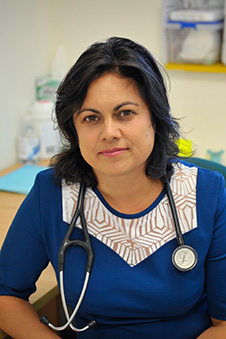While the world has been focused on Covid-19's spread to new countries many might not have noticed that the outbreak in China is slowly being brought under control. Whereas China was reporting over 3,000 new cases a day early in February this number is now down to 119. We need to understand how this control has been achieved in China and apply the lessons learnt to our response in New Zealand.

Dr Ayesha Verrall.
Fortunately, we can learn from a joint mission formed between China and the WHO to investigate the outbreak. The joint mission had access to China's disease surveillance database and talked to officials, clinicians and the public at hospitals, clinics, local public health centres and laboratories in five cities including Wuhan. The joint mission has had the opportunity to see beyond headlines and official statements and into the workings of the Chinese public health response.
The key to success is doing the basics of public health management at scale and fast. This means the funnelling symptomatic people into assessment centres, rapid diagnosis of cases with widely available testing, and the meticulous follow up of their contacts by public health officials. Confirmed cases then need to be isolated and their contacts quarantined for 14 days. These types of activities, called “cluster control” comprise the third “stamp it out” stage of our pandemic plan.
In an interview the mission's leader Canadian Dr Bruce Aylward made two important distinctions between influenza, a respiratory virus health officials are experienced with, and Covid-19. First, it takes much longer for a person exposed to Covid-19 to develop infection and transmit it (7 days) than influenza (3 days). Second, Covid-19 infection usually results in the person feeling unwell and having symptoms, whereas for influenza the symptomatic cases that seek medical attention are just the 'tip of the iceberg'. This means a system of testing people with symptoms of Covid-19 and contact tracing and quarantine should be able to contain spread of the virus whereas this usually fails for flu. Dr Aylward described this case and contact management system as “90% of the Chinese response”.
These different transmission dynamics also impact how the government stages its response. During the 2009 H1N1 influenza (swine flu) outbreak influenza predictably got away from us. We received first evidence the virus was circulating in our community in the week ending June 14, and by June 22 we switched from a “stamp it out” strategy to a “manage it” phase, in which we stop tracing and isolating contacts and try and support health services with the deluge of cases. But in China sustained community transmission of Covid-19 was reversed. In other words we can't treat Covid-19 like pandemic influenza because triggering a shift to a “manage it” phase at the first sign of sustained community transmission could have catastrophic impact on people and overwhelm the health system. As WHO Director Dr Tedros said yesterday, “this is not a one-way street. We can push this virus back.”
There's another reason we need to prioritise the diagnosis of cases and tracing of contacts for Covid-19. Every other tool in the public health tool-kit imposes greater costs on society. When public health officials ask someone exposed to a Covid-19 case to self-isolate for 14 days we are taking the most targeted approach we can. Measures like closing schools, public transport or mass gatherings pose much greater social and economic costs. And as we are learning, those costs can be just as harmful as the virus itself. That isn't to say the costs are low. People in isolation will need our support, and we need to accept that we might be running this system of rapid and intensive contact tracing for months in different places across the country.
So what would a successful case and contact management system look like in New Zealand? First, sick people need safe places for assessment. There are a variety of models including community assessment centres, telehealth or drive-through testing. Testing needs to be available quickly, which means the test is available in regional centres with every step on the specimen's journey optimized for fast turn-around. Positive results need to be rapidly conveyed to the patient and also public health officials who trace their contacts who are then placed in isolation. We have excellent public health professionals in New Zealand but we have to be honest that we don't have enough for this task. We saw how under-resourced public health units can be overwhelmed during recent mumps and measles outbreaks. New Zealand needs to expanding this workforce now, as this is the key measure likely to prevent a large outbreak of Covid-19.
Dr Ayesha Verrall is an Infectious Diseases Physician and Epidemiologist at the University of Otago Wellington.
This article was first published on the Stuff website
FIND an Otago Expert
Use our Media Expertise Database to find an Otago researcher for media comment.